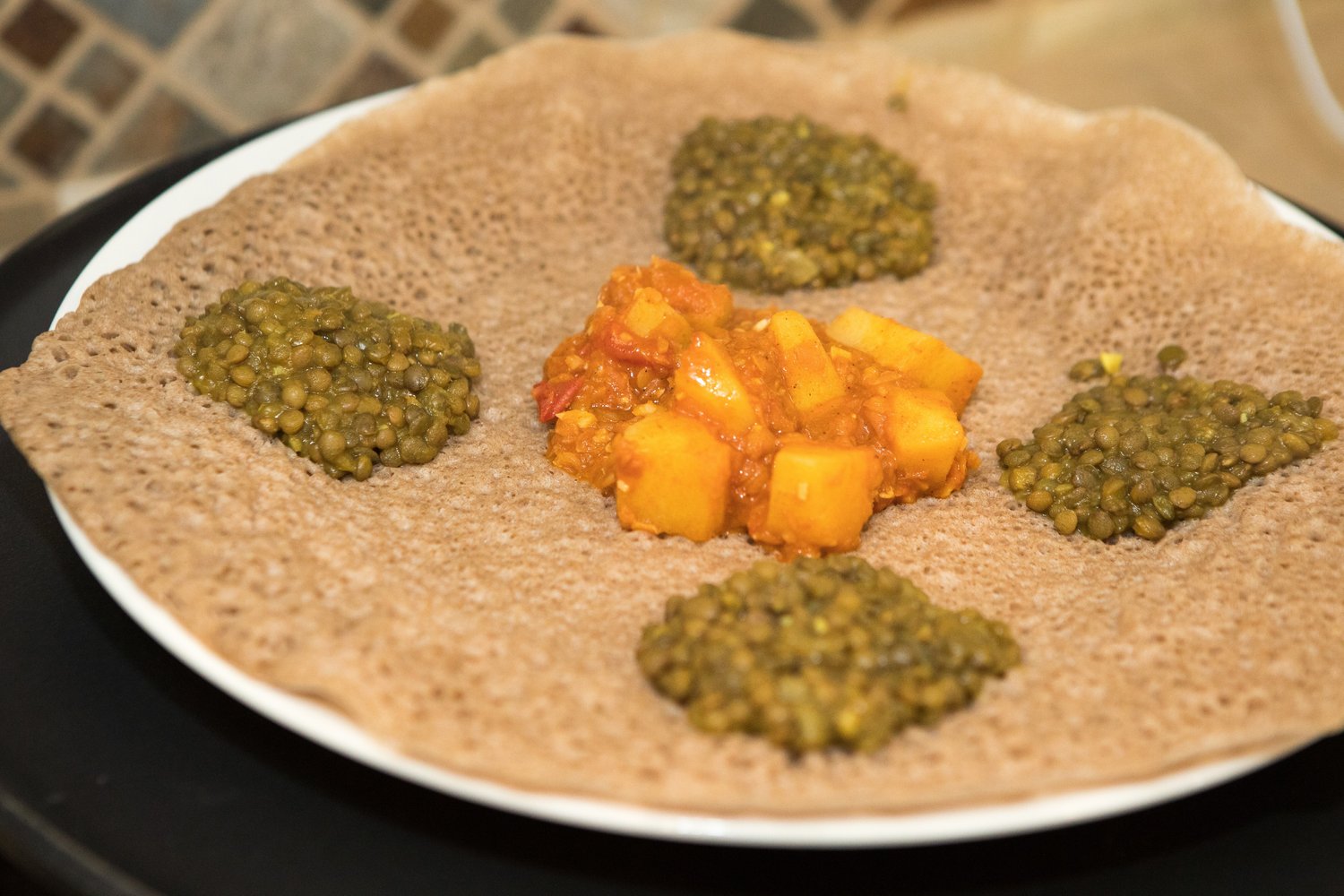
In Addis Ethiopia where I grew up, Injera is traditionally made with 100% teff flour. Teff, an ancient grain that is very fine– about the size of a poppyseed— is very nutritious and considered a superfood. Like sourdough, Injera is made from a fermented starter, a thin batter that is fed with water and grain flours and left to rise.
Here in the United States, it’s common to make Injera using grains other than teff. When I first came to the US, I tried to make Injera using only teff flour, but I had difficulty getting the batter to ferment. In Ethiopia, the fermentation had been easy—perhaps because of the climate, or perhaps because the fermented starters had been so long established.
When I began a starter here, I would add additional flours such as brown rice, barley and wheat, until the batter began to ferment. Once my Injera starter was strong and active, I then switched to 100% teff flour. Now I make Injera with only teff, which means it’s much closer to Injera made in Ethiopia where I grew up, and it’s also gluten-free.
While there are many kinds of teff available in Ethiopia, the two most commonly found in the US are brown teff, and light ivory teff. The differences in teff create differences in how the Injera looks. Purchasing Injera from a store or restaurant, you may notice the difference in coloring. Darker colored Injera is usually made with 100% brown teff flour. Light-colored Injera may be made with ivory teff, but it also may contain other grains mixed into the batter. Make sure to ask the store or restaurant if the Injera they have available is made with 100% teff flour, as both types of Injera look very similar.

After purchasing Injera, it can usually last up to three days on the counter or up to a week in the refrigerator. While most stores sell Injera in quantities of ten pieces, you can often purchase Injera from restaurants in quantities of five.
If you do end up having leftover Injera, you can easily wrap it in foil and freeze it to eat later. Then, when you’re ready to eat the Injera you can simply put it in the oven in foil, or take it out of the foil and warm it up in the microwave.
And I am excited to announce that our frozen Injera is now available in Oregon Market of Choice stores and the Bennett Urban Farm Store! It will be available soon on our online store.
I hope you found these tips on Injera helpful! If you have any questions related to Injera, send me an email at [email protected]. If you are not on our email list sign up here to receive recipes, coupons and more.

